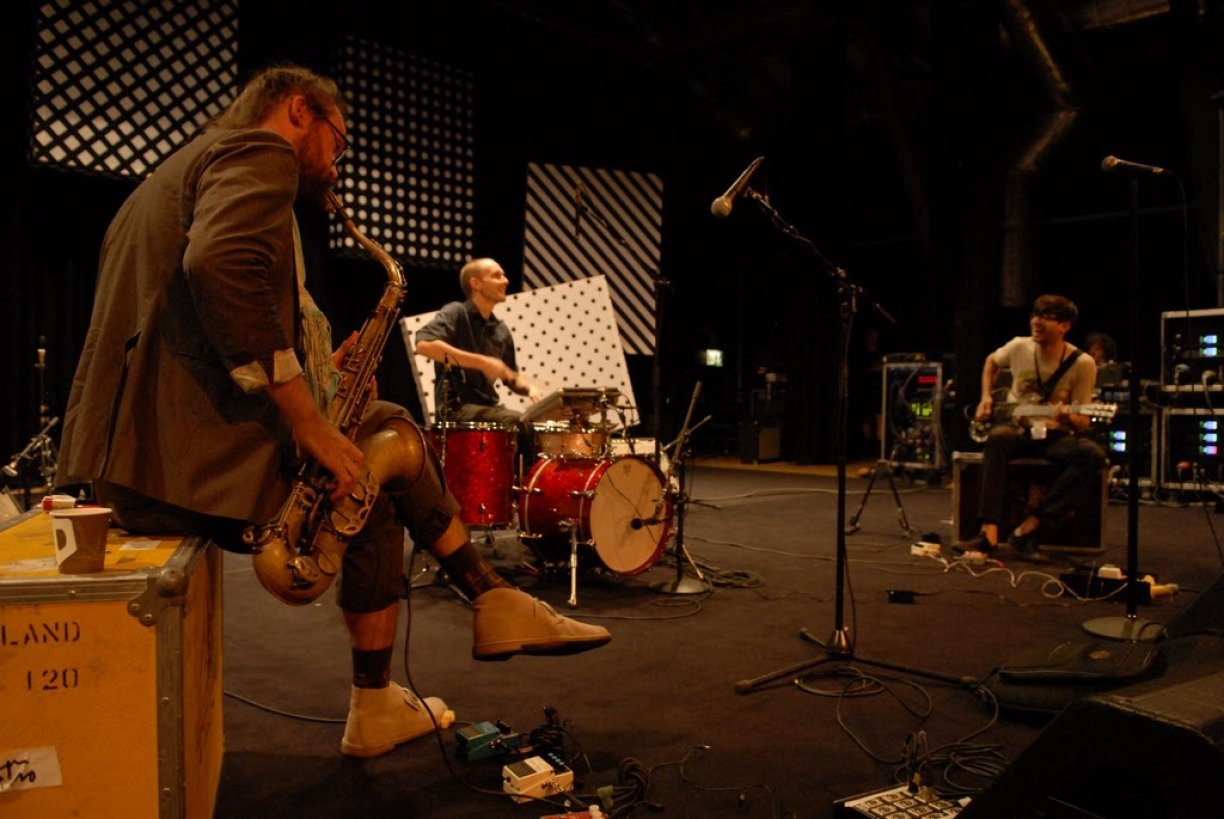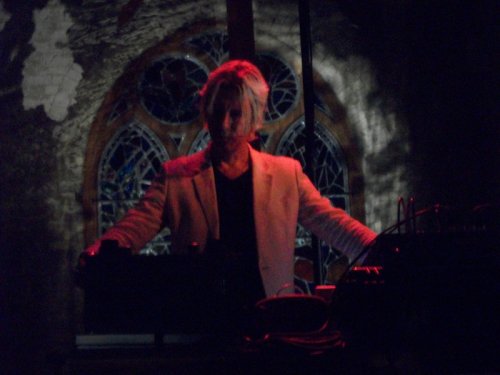Zs was founded in 2000 and is Sam Hillmer (tenor saxophone), Ben Greenberg (electric guitar), Tony Lowe (electric guitar), and Ian Antonio (drum set). While Zs' music has been variously categorized as no-wave, noise, and post-minimalist, it is primarily concerned with making music that challenges the physical and mental limitations of both performer and listener. Manipulating extended technique, unique instrumental synthesis, and near telepathic communication, Zs aims to create works that envelop the listener and unfold sonically over time, evoking unspoken past, present, and future rites and ritual. Zs has performed in lofts, galleries, basements, rock clubs, and concert halls across North America and Europe with The Locust, Gang Gang Dance, Animal Collective, Battles, The Dirty Projectors, Dan Deacon, Peter Brotzman and Han Bennick, and Louis Andriessen. Zs currently records for The Social Registry record label.
David Linton (born Newburgh NY 1956) is a Time-based multiple media artist traveling the vectors of sound, subculture, and signal flow. He has been active in the downtown NYC experimental arts community for 30 years. Originally a percussionist, David has created sound, music, and something in between, for many collaborative dance, theater, & performance settings since his arrival in NY at the end of 1970's. By the later 80's - after a good deal of percussion work alongside musicians such as Lee Ranaldo, Rhys Chatham, Glenn Branca, Elliott Sharp - he was equally known for his live wired solo electro-acoustic drumkit performances as well as his soundscore productions for the Wooster Group and choreographers Karole Armitage and Steven Petronio, among many others. His 1986 solo Lp "Orchesography" was an unlikely collusion of street beats, early sampling tek, and theatrical post modernism. By the early 90's he had retired from performing in the live electro-acoustic vein to concentrate on the vocabulary of entirely electronic music and the resultant paradigm shift in performance priorities this new 'compressed' format suggested. Throughout the 90's Linton became a dedicated advocate for the expansion and appreciation of realtime performance in electronic media through the design and/or production of event/environments such as 'SoundLab' (1996) and eventually 'UnityGain' (1997-present). In the later 90's David was a key participant in the Meg Stuart/Damaged Goods multimedia improvisation project "Crash Landing." From 2001, Linton's fascination with instantaneous collaborative audio visual communication among select units of electronic sound and visual artists assumed the form of a live experimental television Manhattan cable/webcast project - UGTV - Unitygain Television (2001-2004) - for which he was producer/director and occasional performer. In 2004 David embarked upon his present course with the launch of his solo audio-visual project: the Bicameral Research Sound & Projection System.
With his "Bicameral Research Sound & Projection System" (2004), Linton aims to make vibrational-wave-induced perceptual energy states manifest by deploying interconnected measures of electric sound and pulsing light in live action with hand-manipulated objects in physical (live camera) space. He employs an integrated recursive audio & video feedback system of his own perversely simple design modulated by freehand intervention to deliver vigorous eye, ear, and - sometimes - body-shaking real time audio visual performances from which a kind of retro-tech animist ritual "medicine show" emerges, blurring subject and object. Thematically David likes to consider that within the 20th century, 60 Hz alternating electrical current gradually came to function as a primary subliminal Prana in the mass bio-energetic body/culture of human life in North America...





